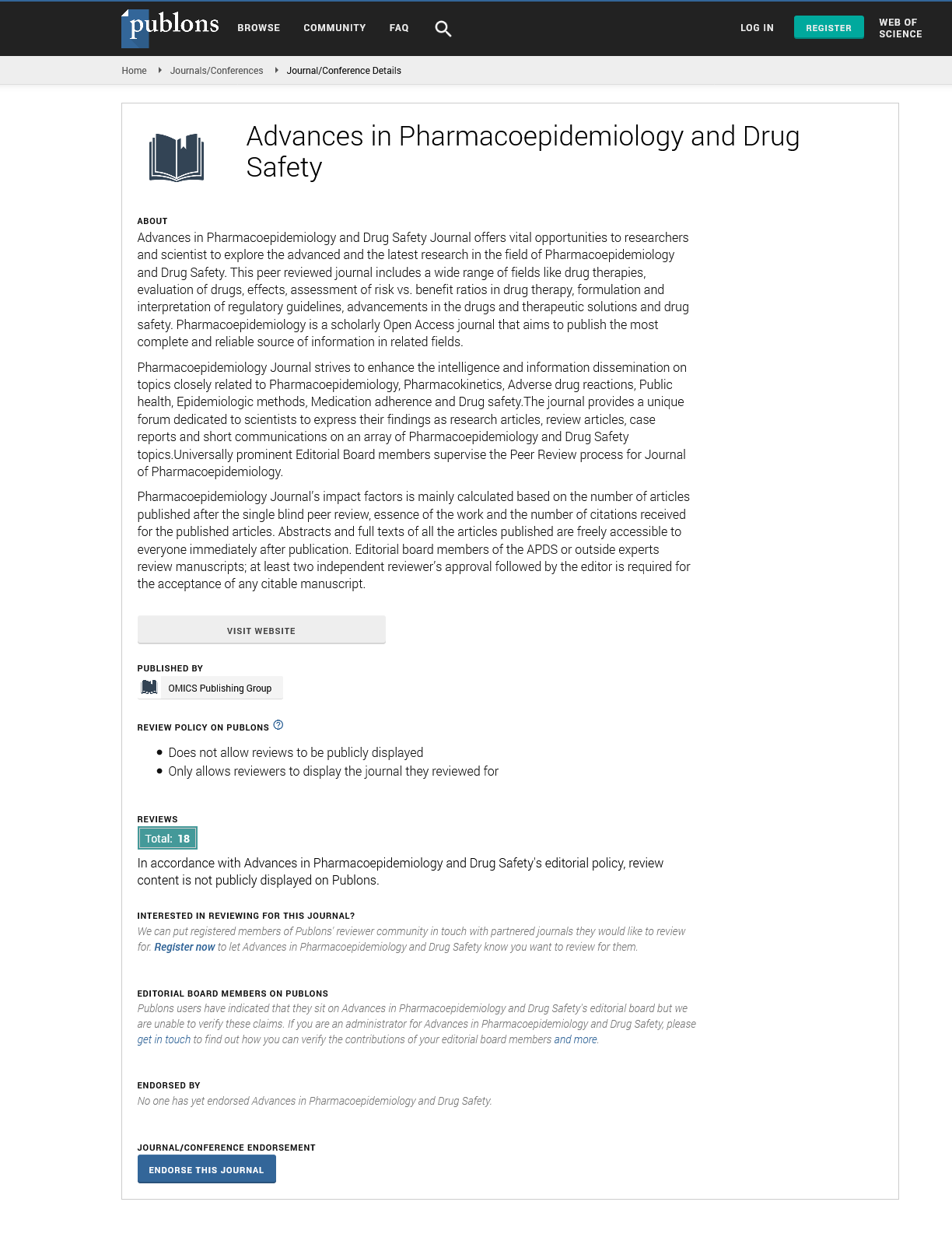Indexed In
- Open J Gate
- Genamics JournalSeek
- Academic Keys
- JournalTOCs
- RefSeek
- Hamdard University
- EBSCO A-Z
- SWB online catalog
- Publons
- Geneva Foundation for Medical Education and Research
- Euro Pub
- Google Scholar
Useful Links
Share This Page
Journal Flyer

Open Access Journals
- Agri and Aquaculture
- Biochemistry
- Bioinformatics & Systems Biology
- Business & Management
- Chemistry
- Clinical Sciences
- Engineering
- Food & Nutrition
- General Science
- Genetics & Molecular Biology
- Immunology & Microbiology
- Medical Sciences
- Neuroscience & Psychology
- Nursing & Health Care
- Pharmaceutical Sciences
Abstract
Evaluation of Pattern of Drug Use in Tertiary Health Care Setting in Central Tigray Using WHO Prescribing Indicators
Gebremicheal Gebreslassie Kasahun*, Gebre Teklemariam Demoz, Amha Teklu Asayehegn, Leake Gebremeskel Gebrehiwot, Goitom Mengstu Tesfay and Desilu Mahari Desta
Background: Rational drug use entails a multi-collaborative effort which encompasses various professionals. Prescribing indicator is among the WHO core drug use indicators used to investigate the rational drug use in healthcare facilities. The study was aimed to evaluate drug utilization pattern using WHO prescribing indicators in Aksum University Comprehensive Specialized Hospital (AkUCSH).
Methods: A facility based cross sectional study design was employed which was conducted between April and May 2019. Records of patients at Out-patient Pharmacy administered from April 01 2018 to March 31 2019 were the study populations. Based on WHO recommendation, a total of 600 patient prescriptions were included. A systematic random sampling technique was employed to include patient prescriptions fulfilled the inclusion criteria. A structured data collection tool was used to collect data and necessary supervision was done during the data collection process. Data was entered in to, checked, and analyzed using Statistical Package for Social Science (SPSS) version 24.
Results: Totally, 1053 drugs were prescribed in 600 prescriptions. The average number of drug prescribed per encounter was found to be 1.78 (SD ± 0.913). Encounters prescribed using generic name were 95.63% (1007). Moreover, about 99.5% (1048) prescribed medicines were within the Essential Medicines List (EML). In this study from a total of 1053 prescribed medicines, 49.2% (295) and 4.0% (24) were antibiotics and injections, respectively.
Conclusion: Our finding revealed, the pattern of rational drug use using WHO prescribing indicators is suboptimal.
Published Date: 2020-08-04; Received Date: 2020-06-11

